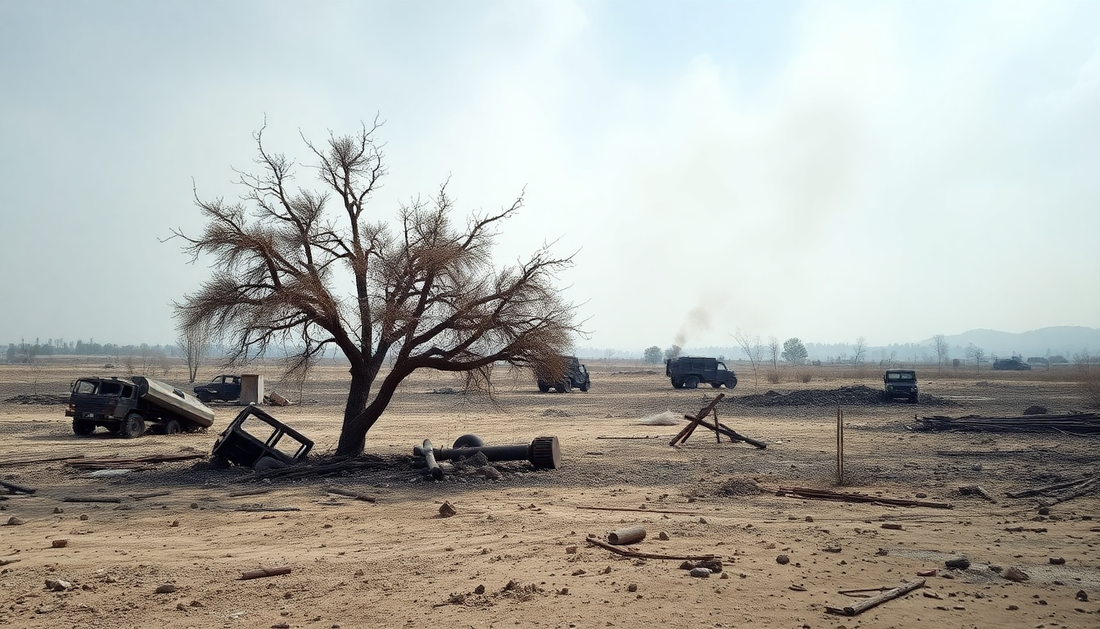In a world increasingly plagued by conflict, it is crucial that we shift our focus to the often-overlooked environmental consequences of war. While the human cost of armed struggle is well-documented, the lasting damage inflicted upon our planet's delicate ecosystems is a sobering reality that demands our urgent attention.
The Scars of Direct Environmental Destruction
When nations clash, the collateral damage extends far beyond the battlefield. Tanks and artillery leave indelible marks on the land, tearing through forests, decimating habitats, and contaminating precious soil and water sources. The detonation of explosives can trigger landslides, erode riverbanks, and disrupt the natural flow of waterways, disrupting the intricate balance of entire ecosystems.
In the aftermath of conflict, the landscape is often left scarred and barren, with once-thriving landscapes reduced to lifeless wastelands. The loss of biodiversity is staggering, as countless species of flora and fauna are driven to the brink of extinction, their delicate homes destroyed by the ravages of war.
Long-Term Ecological Consequences
The environmental toll of war extends far beyond the initial destruction. The release of toxic chemicals, radioactive materials, and other pollutants can have devastating long-term effects, poisoning the land, air, and water for generations to come. The contamination of groundwater and soil can render once-fertile farmland unusable, jeopardizing food security and the livelihoods of local communities.
The disruption of ecosystems can also have far-reaching consequences, as the displacement of wildlife and the breakdown of natural cycles can trigger a cascade of ecological imbalances. The loss of keystone species and the introduction of invasive species can irrevocably alter the delicate web of life, leading to the collapse of entire biomes.
The Insatiable Appetite of War
The environmental impact of war extends beyond the battlefield, as the manufacturing of military equipment, the consumption of energy, and the exploitation of natural resources all contribute to a staggering carbon footprint. The production of tanks, planes, and other weapons of war requires vast amounts of raw materials, energy, and manufacturing processes that leave a significant ecological footprint.
Moreover, the logistical demands of military operations, from the transportation of troops and supplies to the maintenance of bases and facilities, further strain the planet's resources and accelerate the pace of climate change. The environmental cost of war is a burden that extends far beyond the immediate conflict zone, with ripple effects that reverberate across the globe.
Towards a Greener Future: Mitigating the Environmental Impacts of War
As the world grapples with the devastating consequences of armed conflict, it is clear that a new approach is needed – one that prioritizes environmental protection and sustainable conflict resolution. International protocols and agreements must be strengthened to ensure that the ecological impact of war is taken into account, and that the restoration of damaged environments is a central component of post-conflict reconstruction efforts.
Governments and military organizations must also embrace green technologies and sustainable practices, reducing their carbon footprint and minimizing their environmental impact. The development of renewable energy sources, the implementation of energy-efficient systems, and the adoption of environmentally-friendly materials and manufacturing processes can all play a crucial role in mitigating the environmental toll of war.
Conclusion: A Call for Global Environmental Consciousness
As we grapple with the complex challenges of the 21st century, it is clear that the environmental consequences of war must be at the forefront of our collective consciousness. By understanding the far-reaching impact of armed conflict on our planet's delicate ecosystems, we can work towards a future where sustainable conflict resolution and environmental protection go hand-in-hand.
Each of us has a role to play in this endeavor, whether through advocacy, personal lifestyle choices, or support for organizations and initiatives dedicated to environmental restoration and peacebuilding. By embracing a global environmental consciousness, we can ensure that the scars of war are not etched into the very fabric of our planet, but rather that the path towards a greener, more sustainable future is paved with the collective determination to protect our shared home.

